Germany is considered to have the most extensive choices when it comes to bread.
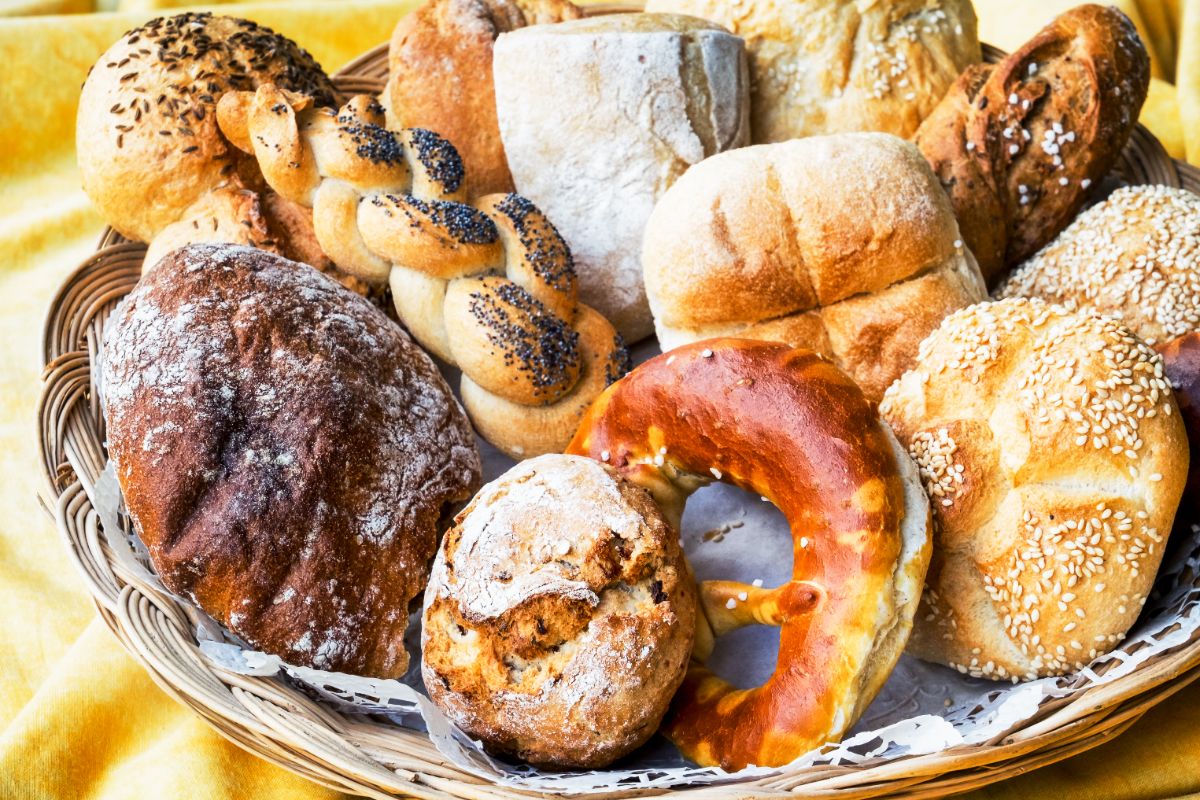
There are more than 3200 officially recognized types of bread in Germany according to the “German Institute of Bread”. Some of the options even have variations depending on the region where you find them. One of the main reasons for Germany to have so many types is there are many types of rye, spelt, and wheat, which are native to the country.
Another reason is the German Bakers complete creative training with a high standard that cannot be found in other countries.
Because of these reasons, a culture of craftmanship has been created. This culture makes German bread a staple food among the people of this country, not an accompaniment as in other areas.
Bread is a Part of German Culture
Germany has more varieties of bread than almost any other country and the bakeries to sell it. The UNESCO (United Nations Educational, Scientific and Cultural Organization) has officially added German bread culture to its Intangible Cultural Heritage list.
Because bread is a staple in Germany, you will find it on the table for breakfast, break-times, lunch, and dinner. Bread even has its place on German TV, where you will see a talking loaf named Bernd, a famous German children’s character.
There is also a comedy series called, Bernd das Brot, which is hosted by a titular character and has been on the air since 2002. Another popular symbol is used by the postal service in Germany where they have put a “German Bread Culture” slogan on their stamps that went on sale in 2018.
Why an Immense Variety of Bread Exists in Germany
Germany has a fragmented history which contributes to its immense variety of bread. What is now known as Germany, was at one time a cluster of hundreds of small territories run by a duke or duchess. These territories all had their own culture and dialect as well as their own bread.
Throw into this mix, the Middle Ages where another cluster of growing merchant cities were all trying to attract new emigrants and trade. Many of these used baked goods as their trade.
The amount of sunshine you will find in Italy or France cannot be found in Germany; this creates another reason for the variety of bread in the country. Wheat does not grow as well in Germany, so grains such as spelt and rye which thrive in their environment produces bread not found in other regions. Wheat-based bread remains in Munich and Stuttgart which are southern cities.
During the olden days, the main driver for creating a bounty of bread were the merchants, dukes, and farmers who all needed something nourishing after working in rainy and often cold days. Because of this old tradition, Germans today still eat sourdough bread made from spelt, rye, and wheat flours which are all packed with seeds and grains.
You will find German bread to be heavy with a lot of substance, and it outweighs the fluffy focaccia or ciabatta. The tradition of creating hefty loaves did not catch on in the rest of Europe. As an indication of how different the German bread is from its neighbors; a myth was created that has lived on in Germany for decades.
The legend states that while on a military campaign in France, Johann-Wolfgang von Goethe offered some of his dark rye bread to two captured Frenchmen. The Frenchmen promptly fled back to their own lines.
Serving Bread in Germany Today
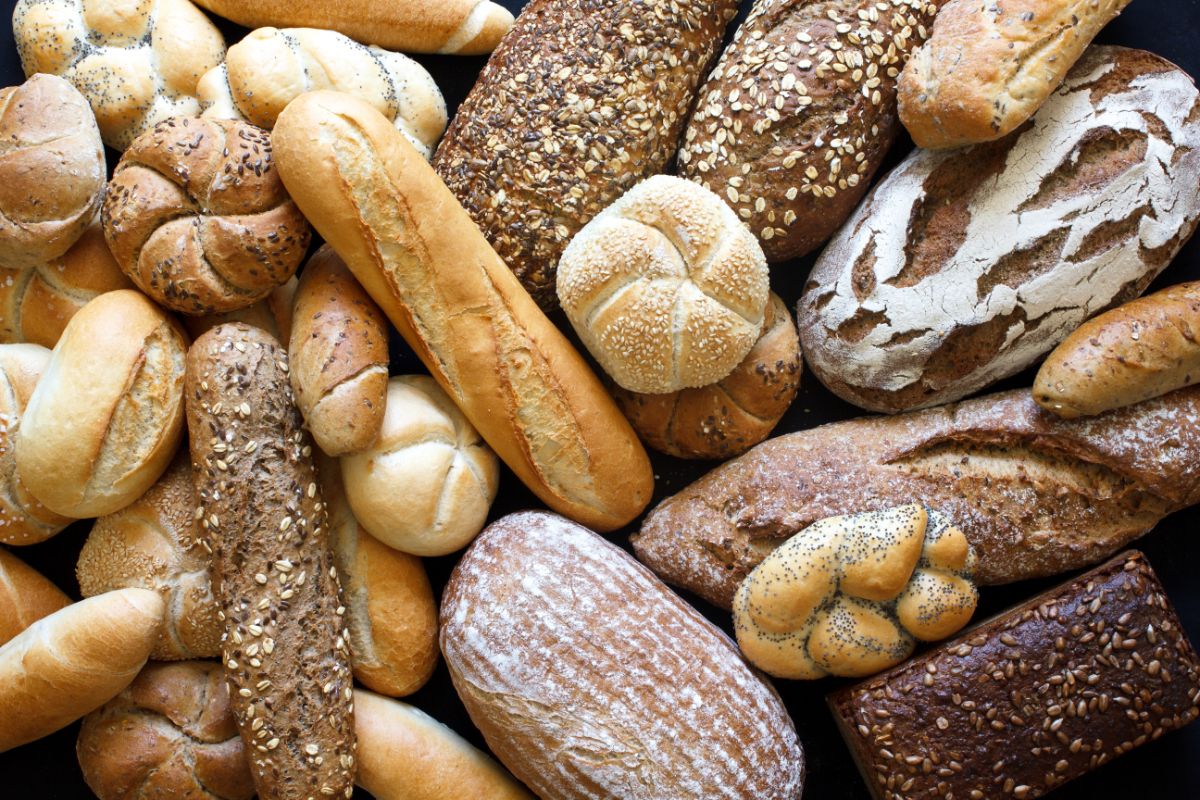
In many cities, you will see taco or burger trucks setting up to serve people lunch. Germany, however, sticks to their standard bakeries, which all stock up with rolls with a variety of fillings- considered to be real German fast food.
The range of baked goods offered can be little over-whelming when you encounter it for the first time:
- Mixed bread
- Stone-oven bread
- Pumpkin bread
- Farmer’s bread
- Sunflower bread
- Five seed bread
and so on
These are the ones you’ll find on the lunch wagons. Wait until you visit the bakery to understand how completely overwhelming the choices can become. All that you will see are good, along with the pastries and cakes.
Many cultures are now introducing organic and health-wise foods into our markets. Germans were baking whole-grain, nutritious bread long before we saw the introduction in our markets.
We also see supermarket chains baking their own bread, but in Germany, the local corner bakery and almost every supermarket come with its own little bakery built right in.
German Standards in Bread Making
There are standards for making bread in Germany. They are determined by size and quality, and every year, the German Institute for Bread declares a ‘bread of the year.’
Bread is the cornerstone of the German diet and is consumed with almost every meal. Some of the larger bakeries are having difficulty finding new bakers, as fewer young people have an interest in learning this difficult trade.
This absence of new bakers does not mean that the standards will be lowered. It also does not mean there are no artisan bakers out there trying to create new types of bread.
In cities such as Munich or Berlin, bakeries like Springer, Soluna Brot Ol, and Zelt fur Frot all base their products on local, natural ingredients and continue to create new delicious products.
German Bread Goes Abroad
Once you have tasted German bread, you never forget it. This taste may be what has brought German bread into many countries across the globe.
German bakers have come to bakeries in Australia, the UK, Canada, India, the United States and a few more. The customers to these bakeries typically are tourists from Germany and people who have worked and studied in Germany.
Germans generally do not go a day without eating bread, and when they come to another country, they long for this tradition. Bakers moving to these areas has proven successful for them and fulfilling for their customers.
Top Ten Popular Types of Bread in Germany
1. Pretzels
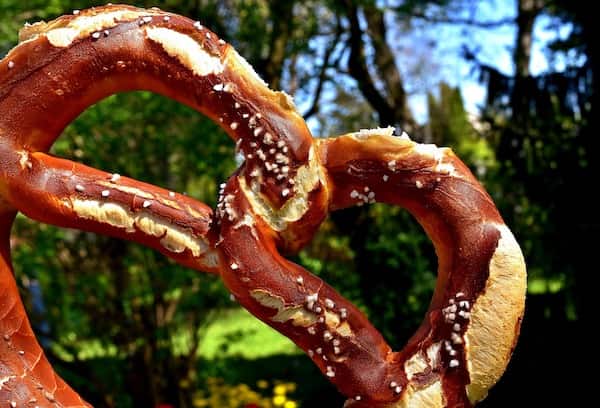
Pretzels have almost become an icon in Bavaria. They have a slightly brown, hard crust with a chewy, soft inside. There are varieties sprinkled with sesame seeds or salt, and some are dunked in butter. The shape of the pretzels varies across different regions.
2. Milchbrötchen
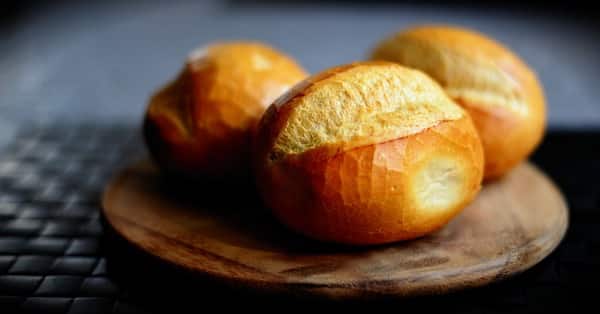
Milchbrötchen is favored by kids and those who do not have to watch their carbs. It offers softness and fluffiness from the milk added to the dough before it gets baked.
Varieties of this bread include nuts, raisins, or chocolate chips.
3. Pumpernickel
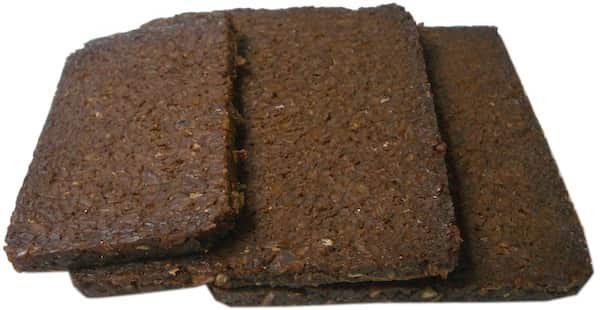
Pumpernickel is a dark brown bread made from rye. This bread is perhaps Germany’s most famous type of bread and it is almost impossible to find outside of Germany.
The bread is baked over a long time at a low temperature and is often served with salmon or caviar.
4. Fünf-Korn-Brot Or 5-Korn-Brot
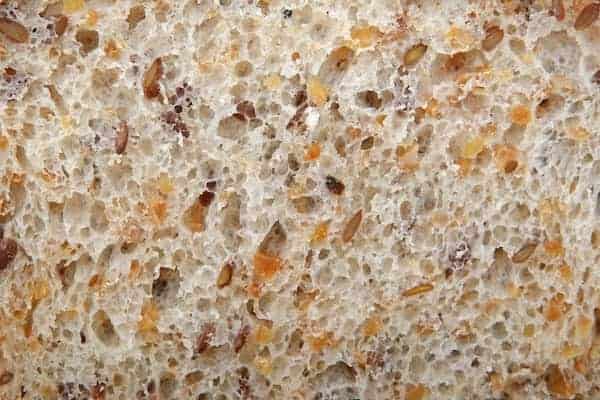
Fünf-Korn-Brot is a five-grain bread and one of the healthiest you can put in your breadbasket. It is made from maize, oats, barley, wheat, and rye.
5. Katenbrot
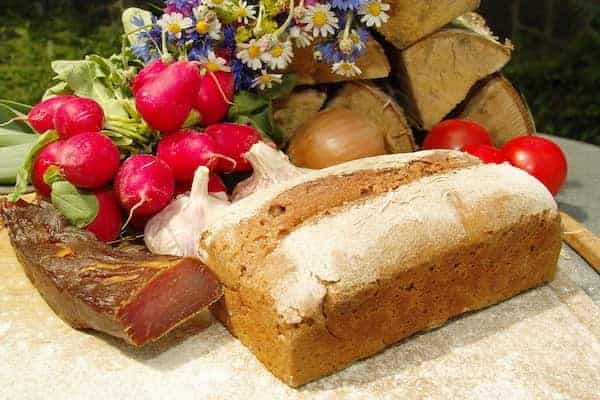
Katenbrot is a barn bread made at the traditional farms in Northern Germany. The bread is dark brown, strong tasting, and coarsely textured. It is often served with cold cuts and cheese.
6. Dreikornbrot
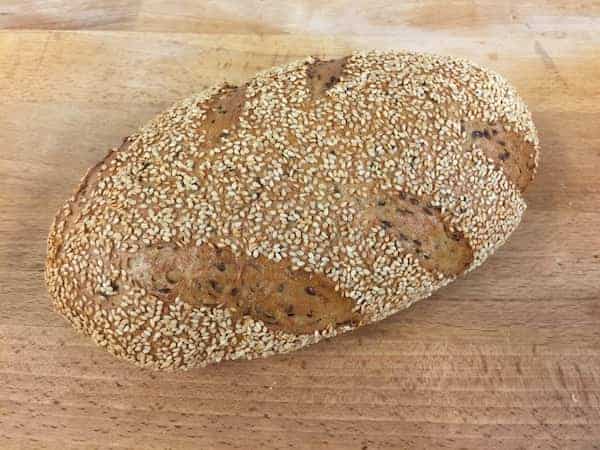
Dreikornbrot is similar to Fünf-Korn-Brot but is made from three grains. This bread is made from wheat, rye, and oats, and usually served at breakfast meal with cold cuts and cheese.
7. Sonnenblumenbrot
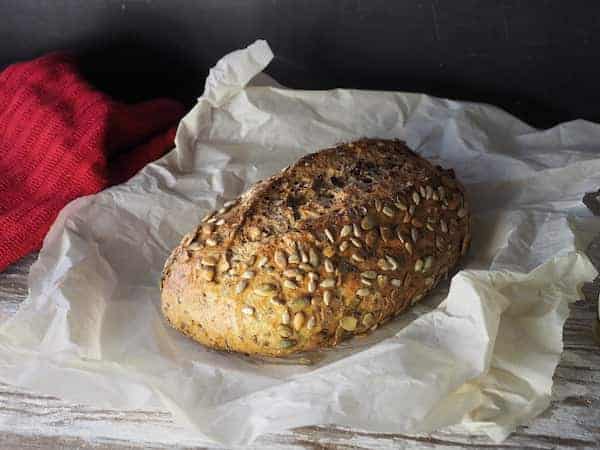
Sonnenblumenbrot is made from sunflower seeds and is sprinkled with a dose of sunflower seeds. It is a slightly sweet bread and most often served with a layer of fruit jam.
8. Hörnchen
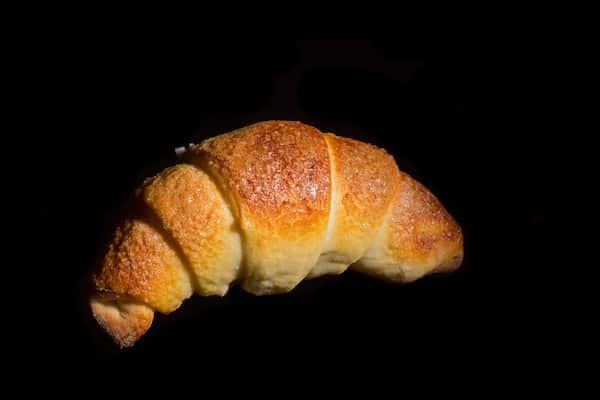
Hörnchen also called a croissant in France as well as many parts of the world. It is a favorite for breakfast in Germany.
This bread is also used as a snack bread and is often filled with butter, cream, or chocolate. A lot of people enjoy putting a layer of jam or chocolate over it as well.
9. Vollkornbrot
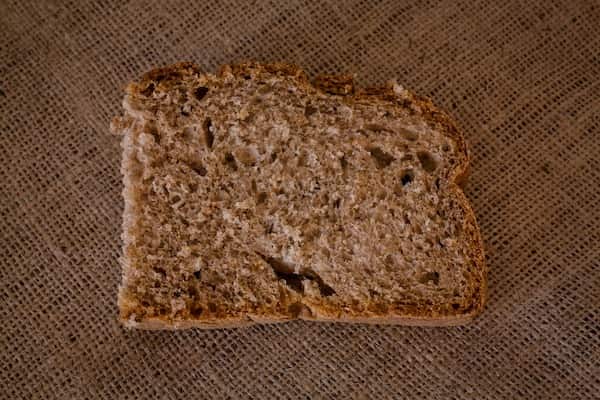
Vollkornbrot is a whole grain bread and a favorite among those who are health-conscious eaters. There is a law in place in Germany that requires any establishment serving Vollkornbront to have a whole grain flour content of at least ninety percent.
10. Brötchen
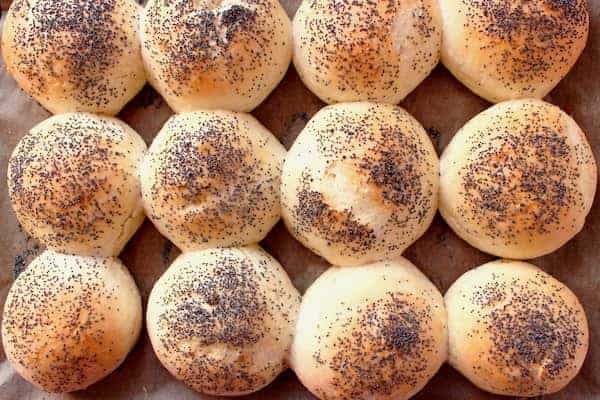
Brötchen is a small, crusty roll that you will find stocked in every supermarket and bakery in Germany. They are served plain or sprinkled with pumpkin seeds, sesame or poppy seeds.
This bread is often used to make the German version of a hotdog, the bratwurst.
